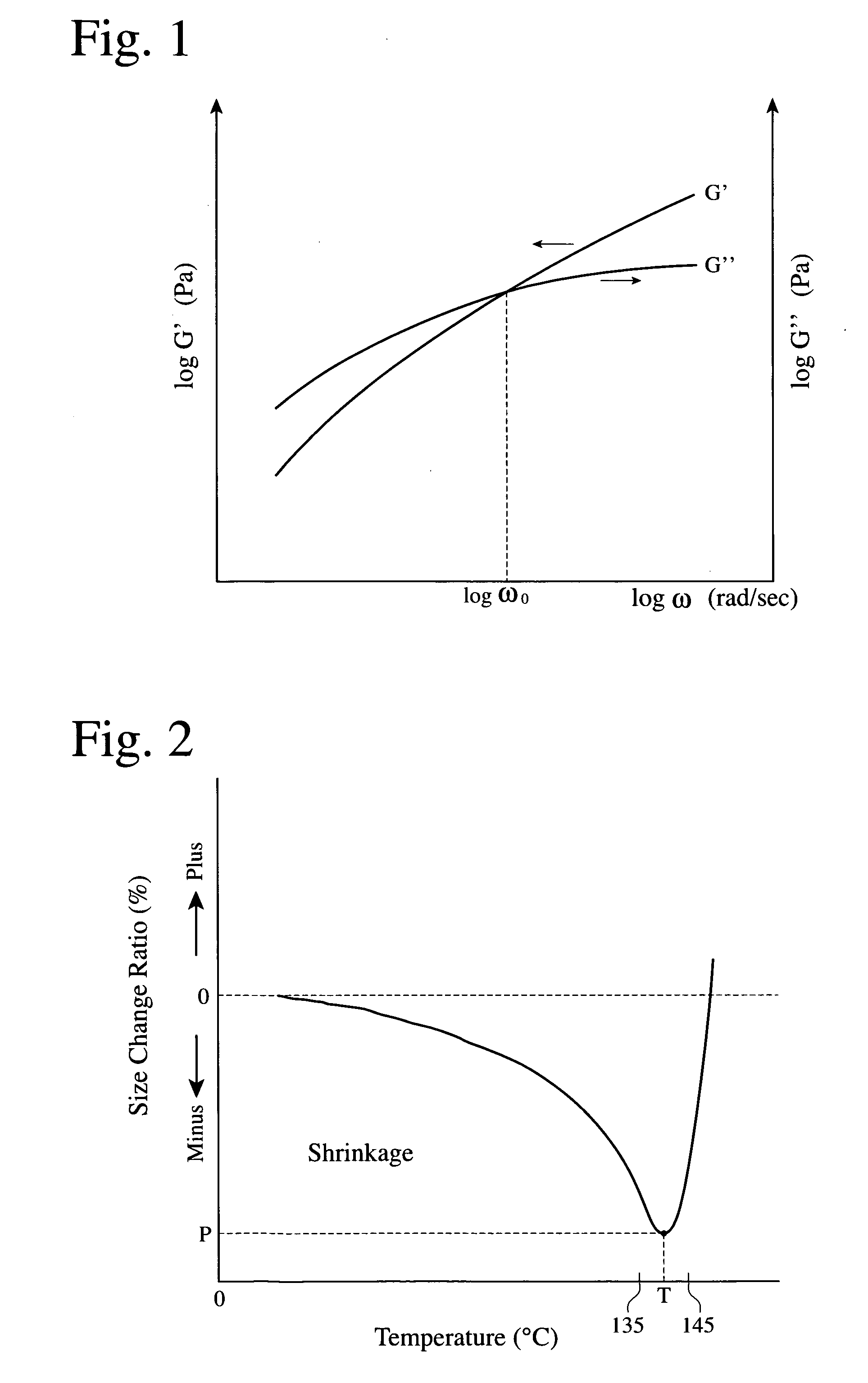Microporous polyolefin membrane, its production method, battery separator and battery
a microporous polyolefin and membrane technology, applied in the field of polyolefin membranes, can solve the problems of low pin puncture strength, manufacturing difficulties, and difficulty in obtaining high power output, and achieve the effects of good balance of permeability, heat-shrinkage resistance, and pin puncture strength
- Summary
- Abstract
- Description
- Claims
- Application Information
AI Technical Summary
Problems solved by technology
Method used
Image
Examples
example 1
[0153]99.625 parts by mass of a polyethylene (PE) composition comprising 18% by mass of ultra-high-molecular-weight polyethylene (UHMWPE) having a weight-average molecular weight (Mw) of 2.5×106, and 82% by mass of high-density polyethylene (HDPE) having Mw of 2.8×105, were dry-blended with 0.375 parts by mass of tetrakis[methylene-3-(3,5-ditertiary-butyl-4-hydroxyphenyl)-propionate] methane as an antioxidant. The melt rheometry of the PE composition by RheoStress-300 (available from Haake) at 180° C. revealed that an angular frequency ω0, at which storage elastic modulus G′ and loss elastic modulus G″ were equal, was 0.114 rad / sec. The measurement of the same PE composition also revealed that it had a melting point of 135° C. and a crystal dispersion temperature Tcd of 90° C.
[0154]The Mws of UHMWPE and HDPE were measured by a gel permeation chromatography (GPC) method under the following conditions.[0155]Measurement apparatus: GPC-150C available from Waters Corporation,[0156]Column...
example 2
[0166]A microporous polyethylene membrane having an average thickness of 24.7 μm was produced in the same manner as in Example 1, except that the stretching temperature was 119.5° C., that the re-stretching conditions were a temperature of 122.5° C. and a magnification of 1.6 fold in a transverse direction, and that annealing was conducted at 122.5° C. such that the length in a transverse direction became 1.4 fold that before re-stretching.
example 3
[0167]APE composition comprising 30% by mass of UHMWPE and 70% by mass of HDPE was prepared. This PE composition had ω0 of 0.0343 rad / sec, a melting point of 135° C., and a crystal dispersion temperature Tcd of 100° C. A microporous polyethylene membrane having an average thickness of 25.6 μm was produced from this composition in the same manner as in Example 1, except that the concentration of a polyethylene solution was 23% by mass, that the re-stretching conditions were a temperature of 123° C. and a magnification of 1.6 fold in a transverse direction, and that annealing was conducted at 123° C. such that the length in a transverse direction became 1.4 times that before re-stretching.
PUM
| Property | Measurement | Unit |
|---|---|---|
| viscoelastic angular frequency ω0 | aaaaa | aaaaa |
| temperature | aaaaa | aaaaa |
| temperature | aaaaa | aaaaa |
Abstract
Description
Claims
Application Information
 Login to View More
Login to View More - R&D
- Intellectual Property
- Life Sciences
- Materials
- Tech Scout
- Unparalleled Data Quality
- Higher Quality Content
- 60% Fewer Hallucinations
Browse by: Latest US Patents, China's latest patents, Technical Efficacy Thesaurus, Application Domain, Technology Topic, Popular Technical Reports.
© 2025 PatSnap. All rights reserved.Legal|Privacy policy|Modern Slavery Act Transparency Statement|Sitemap|About US| Contact US: help@patsnap.com

